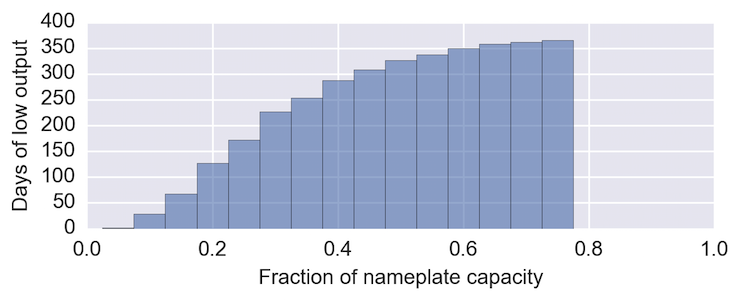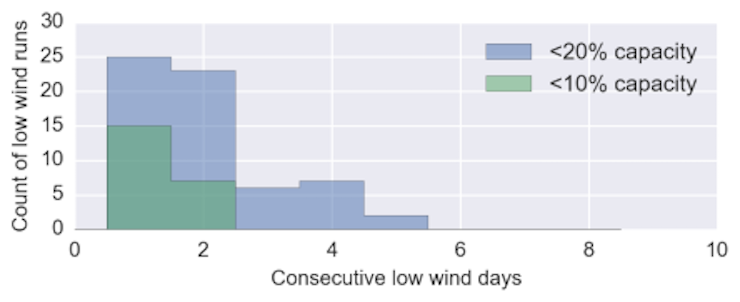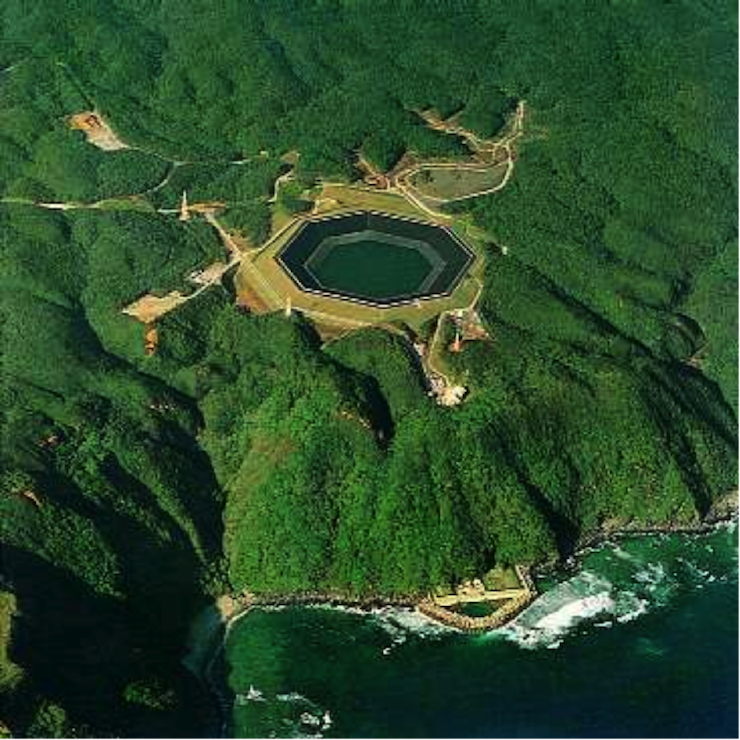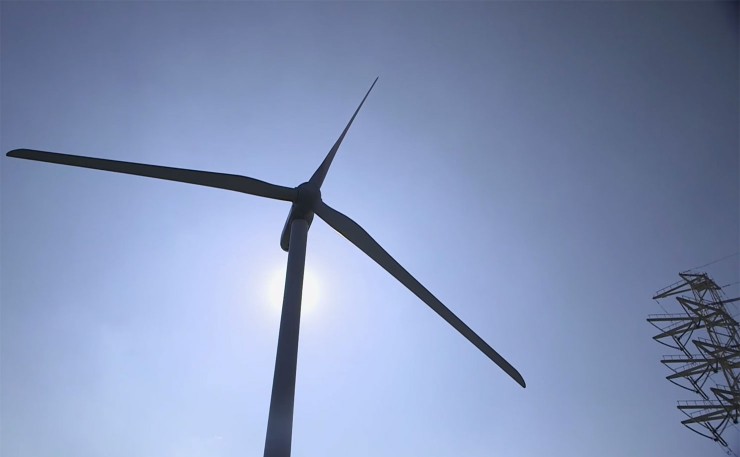The state is suffering as a result of its ‘casino style’ electricity system, writes Geoff Russell.
South Australia doesn’t often make the The Sydney Morning Herald; not unless we do something spectacular, like beat the Swans. But our current electricity problems prompted an article by SMH economics editor Peter Martin. Our wattage woes got an even bigger examination in The Conversation by energy expert Hugh Saddler.
Both articles suffered from the tyranny of distance. They missed what is causing so much angst locally. In November last year, 110,000 homes (which probably house 20 per cent of Adelaide’s population) were blacked out when one of our two interstate power connectors failed. Imagine a million Sydney-siders without power and you’ll get the picture.
Then, more recently, we have BHP threatening temporary closures until the SA Government persuaded the Pelican Point gas-fired power station to re-open. Large manufacturers of any kind don’t like unreliable power or power spikes. Nor do lesser mortals. Today Tonight’s Hendrik Gout was out interviewing Riverland fruit and wine producers being hit by price spikes. Irrigated farming is all about big really big pumps, and a sound can be worth a thousand pictures … ask yourself why is a fruit grower who could be using the grid running a bloody big diesel generator? What level of stupidity or incompetence could make SA electricity the second choice behind diesel?
Saddler, like Martin, missed the point. He was talking about averages and averages don’t mean much when you are lighting candles and burning diesel. Saddler reckoned the people blaming wind didn’t have much evidence that it was the problem. Read on please, Hugh.
The National Electricity Market (NEM) is a dream come true for unreliable power sources like wind and solar. In a sensible electricity system, Governments would tender for system components of a specified reliability for 24×7 electricity and award jobs to the best bids … or build it themselves like they used to. Whether bids involved big centralised long lived generator systems or swarms of cheap disposable decentralised generators, the long term costs and behaviour under all conditions are still critical.
But we don’t have a sensible electricity system. We have NEM.
NEM is like a casino where bets are placed every five minutes; meaning suppliers bid for business based on their guesses about the weather. This is tailor made for unreliable systems like wind and solar and highly discriminatory for reliable baseload systems like coal (or nuclear). Gas emerges as a fossil fuel winner; it’s the ultimate God of the gaps. Imagine if employers worked like NEM. Someone promising to work 12 months for $50,000 would get passed over in favour of someone who promised to work for the next five minutes for just a little less; but who might well slack off after just two minutes.
Here’s a 2015 animation showing how NEM roulette is played. It shows how fluctuations in the wind effect wholesale electricity prices. I’m likening it to roulette, but that’s a gross simplification. The mathematics of roulette are trivially simple. NEM, by comparison, is diabolically complex; there are no simple formulas to predict the odds of various events.
Instead you have convolutions of multivariate stochastic processes; even the words are scary. Suppliers of electricity are chosen every five minutes in accordance with prices they bid. When the wind blows, windfarms can underbid everybody because their capital costs are subsidised and their running costs are low; so they get the business. It’s when the wind slows that the punters start blowing on dice and crossing their fingers.
Other forms of energy, like various types of gas turbine or coal-fired generators, have variable start-up times. If you operate a gas-fired generator for example, and your start-up time is half an hour, then a decision to start electricity production constitutes a bet on how windy it will be in 30 minutes time and how long it might stay calm for. And on how many other operators might be thinking the same. If many suppliers make the same bet, then prices will stay low. If you have insider knowledge on wind speed or simply get lucky and end up with little competition, then you can charge top dollar. If you are a retail electricity supplier, then your entire business model is much the same as a race track bookie. You guess what it will cost you to buy the stuff and offer your punters a price you think will keep you in business.
But Martin and Saddler didn’t just miss the blackouts and the volatility, they also missed the Nuclear Fuel Cycle Royal Commission. Why does that matter? Because the Commission didn’t only consider a nuclear waste repository for the state but also nuclear power. Why would a government in a state with a supposedly brilliant and green renewable energy sector initiate such a commission? Why would a Premier from the ALP faction traditionally most vociferously opposed to anything nuclear initiate such a commission?
The fact is that SA’s electricity system is flying on a wing and a prayer. It’s an apt metaphor from a very old song. Wind power supplied 34 per cent of our electricity in 2014-15. That’s an average of the kind much beloved by Saddler, but in Winter, the most we can rely upon is 6.9 per cent of the rated maximum wind power output. This is the figure that matters … 6.9 per cent. So we have a peak demand of just over three billion watts and for parts of winter our wind farms can supply just 75 million watts. Million … Billion. Can you see the problem?
We have nearly 1.5 Billion watts of wind capacity, but when it’s calm and cold and there’s frost on the ground, the theoretical maximum output isn’t of much interest. Our two interconnectors can deliver a total of 680 million watts. There’s that ‘M’ again; we need a ‘B’ but we only have an ‘M’. Australian Energy Market Operator (AEMO), the organisation that runs the NEM casino, has modelling predicting what are euphemistically called “breaches” to reliability standards as soon as 2019. That’s expected problems, not unpredictable things like storms knocking out interconnectors. The unpredictable will be over and above these.
Currently the SA interconnections can supply less than 1/4 of our peak demand. So when our wind farms are supplying just 75 mega watts and our interconnecters are supplying 680 mega watts, then where should the other couple of billion watts come from? Gas of course; the god of the gaps. The Royal Commission found nuclear was uneconomic under NEM’s casino betting rules, but was clear that nuclear power could be competitive in SA under the right conditions; like if we took climate change seriously and we didn’t run our electricity system like a casino in the interests of the parasitic trading classes.
So how do we fix the system without using fossil fuels? We know we’ll have to. Gas is a dead end technology … without carbon capture; which isn’t looking promising.
What about biomass? Consider Germany as a model.
Germany has a massive biomass industry thanks to 200 years of forest expansion after fossil fuels displaced wood as the fuel of choice. The country generates about 45 terawatt hours of electricity per year by logging and burning forests. Putting aside the impact on wildlife and workers of such industries (forestry is always near the top of accident tables), what would a biomass industry look like in South Australia?
If we could match Germany on a per-capita basis we could get about 120 MW, but it wouldn’t be for meeting short falls, it would be baseload power … because that’s how biomass power plants work. But this is not only woefully inadequate, it’s unlikely we could even do that. Why not? Germany produces 76 million cubic metres of wood annually. The per-capita equivalent in SA would be about 1.5 million cubic meters annually … but we currently only produce about 220,000 cubic meters … it’s something to do with being the driest state in the driest continent.
Suppose we double the amount of wind in SA. Would that help? No. Because in winter we’ll still only have 150 mega watts on the worst days and be a couple of billion watts short. But that’s not necessarily the worst of it. What happens when the wind is blowing? Then we might have 200 per cent of what we need and have to dump it. What’s the big deal? The big deal is that all those wind farm owners will be competing for a share of much the same pie, so who’d build a wind farm in such a scenario?
But aren’t I missing the bigger picture?
Surely when the wind isn’t blowing in SA, it will be blowing somewhere else? So why can’t we get electricity from that somewhere else? Because the slogan may have a nice ring, but it’s not actually true on any scale that matters.
John Morgan last year analysed on BraveNewClimate.com the wind power across the entire NEM during the 12 month period following September 2014. Again, the critical thing isn’t averages, but handling the less convenient events. Recall late last year I commented on Richard Di Natale’s personal Heath Robinson lead acid battery system? He handled those “couple of months” of less convenient events by bludging on the grid, but who can the grid bludge on when it’s built with the same unreliable engineering?
Look at the following chart of Morgan’s. For fully 225 days a year, the entire suite of wind farms got less than 30 per cent of their maximum.

Looking at runs of consecutive days, the picture is even worse. There were five pairs of days with less than 10 per cent of maximum for both of the pair.

Note that this isn’t a South Australian wind farm graph. This is a problem for the entire NEM. If it was just a South Australian problem, that could be alleviated with more interconnectors, but it isn’t.
How do you deal with this?
SMH’s Peter Martin postulates batteries and pumped hydro.

Pumped hydro is the name given to systems which use energy during a time of over-supply to pump water up a hill into a holding dam. Then when you need it you release it to flow downhill through a turbine. It’s quite cheap but astonishingly inefficient. To get the amount of energy contained in 4 litres of petrol, you need to pump 13,000 litres of water up to a height of a kilometre. And if you don’t do it right, you can end up also producing significant amounts of methane … oops. There’s a team at Melbourne University that’s been spruiking this technology for some time. If you read the article I just linked, you’ll see they enjoyed a visit to Japan to see the system in the picture to the right.
The picture doesn’t quite capture the size of the dam or the triviality of its output. This particular pumped hydro system involved clearing a rather large area in what looks like otherwise beautiful Okinawan forest for a 250 meter wide octagonal dam which sits 150m above its source of water; the sea. This dam will provide 30 MW of power for about 7 hours. These “little” toys can be quite profitable and useful in a NEM casino environment, but you need more than a few if you want to use them to solve a ‘B’ sized problem. Happily, there looks to be plenty more Okinawa forest not doing anything useful.
And what about the methane I mentioned? There’s probably none from this Japanese system, but if your pumped hydro dam is going to solve a ‘B’ sized problem and is in some kind of natural area that you choose to flood, then rotting vegetation releases methane into the water and this is released as the water drives the turbine. This methane is a dirty little secret of many big dams.
Pumped hydro is fine in the rare circumstances that you can build it without too much ecological destruction, but relying on it is ecological foolishness; almost as foolish as betting the planet on some magic new battery technology that doesn’t have all the problems of all current batteries … like being costly, dangerous, environmentally destructive and incredibly slow to build at scale.
So, not only is South Australia flying on a wing and a prayer, it has absolutely no idea where it’s going or how to land. Nor has anybody else on the 100 per cent renewable band wagon.
Nobody has ever built a 100 per cent renewable electricity system at any kind of relevant scale and nobody has a clue how to deal with the inconvenient events that we know need handling. The current problems are just a taste of things to come if our governments continue to allow our energy supply to operate like a casino instead of actually doing what they were elected to do – governing. The government should be overseeing the planning and building of a complete path to a climate friendly food and energy future.
Donate To New Matilda
New Matilda is a small, independent media outlet. We survive through reader contributions, and never losing a lawsuit. If you got something from this article, giving something back helps us to continue speaking truth to power. Every little bit counts.





